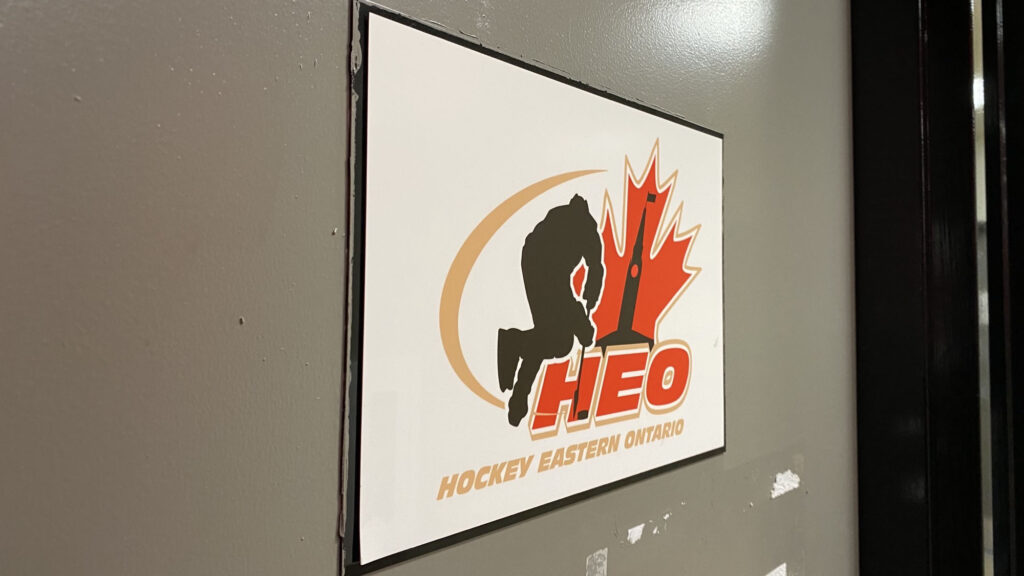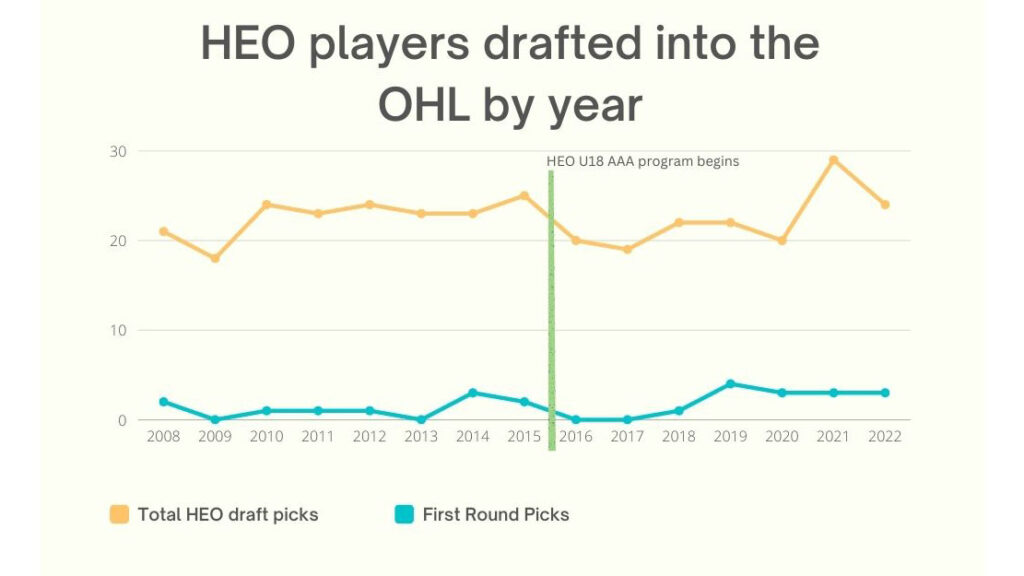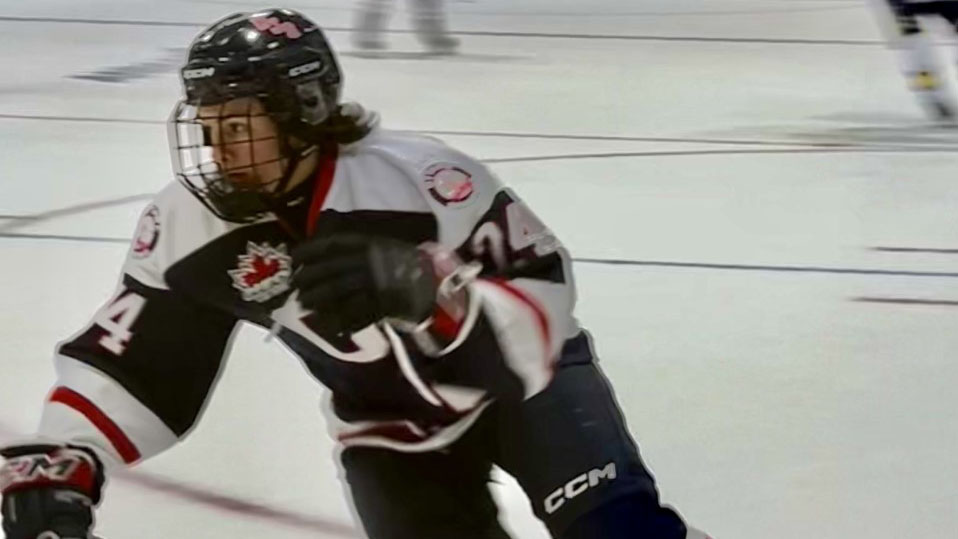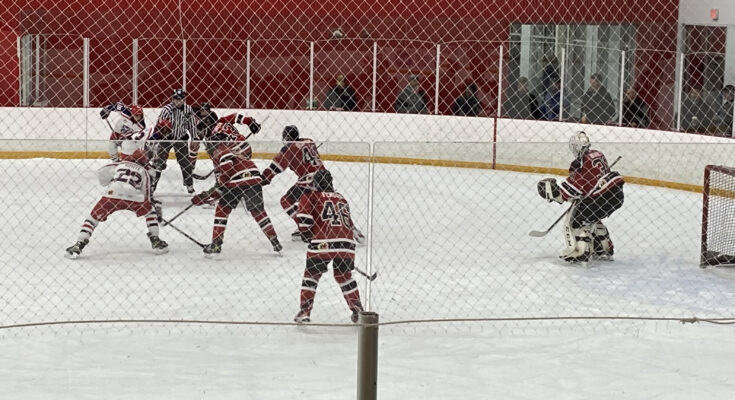By: Rowan McCarthy
There was a tense atmosphere in the arena Monday night as the Cornwall Colts U18 AAA and the Kemptville 73’s U18 AAA went into overtime after three periods of gritty back-and-forth play resulted in a 2-2 tie.
Minutes into OT, Kemptville winger John Collins-Williams curled back in his own zone and sped up the ice. Finding a hole in the defence allowed the 15-year-old Ottawa native to cut hard to the net, receive a clean pass from linemate Jacob Ross and shoot it past Cornwall’s goalie to score the game winner.
Not a bad night for a rookie, who ended the night with one goal and one assist.
Collins-Williams is one of the many 2007-born players who have just begun their first year playing hockey at Ottawa’s highest minor league level. For many, success here is a key step to a successful hockey career.
Enacted in 2016, the current system sees incoming 15-year-old players joining teams consisting of 16 and, to a lesser extent, 17-year-olds (the league has a minimum number of youngest players each team can have and a maximum number of oldest players).
But this U18 AAA league, now in its eighth year, will not see a ninth. Hockey Eastern Ontario, the league’s governing body, announced in the summer it plans to rework AAA hockey across eastern Ontario. Whether the league’s structure worked best for the city and its players, particularly 15-year-olds, has been a source of disagreement for many years.
With changes coming, stakeholders, including players, parents, coaches, scouts and team owners, are left to wonder what the new league will look like and how the successes and failures of its predecessor will inform a new system that better suits Ottawa’s top talent.
More players, lower skill
There have been consistent complaints about the dilution of the league’s top talent once they reach the U18 level, where there are 12 teams with an average of up to 18 players.
That far outnumbers the roughly 85 players in the league for younger players, where there are five teams.
“They have automatically added 40 kids that have never played AAA before,” Blake Callaghan, a scout for the Ontario Hockey League, says.
While there are players left over from the year before, the best players usually get drafted by the OHL in their first year, often removing them from the league. Because of the cap on 17-year-old players, third year players are rare in the league. Therefore, the empty spaces are often filled by players who are being brought up from AA for the first time (AA is a lower level of competitive hockey, where the skill and speed among players is not as high).
Under a revised system with five teams composed only of players under 16, the argument is elite 15-year-old players would develop faster due to the higher skill level.
“But you are doing it at the detriment of a late bloomer,” Ottawa Junior Senators (OJS) head coach Steven Malette says. “Players develop at different paces.”
His understanding of the league’s purpose was to “provide an opportunity for more players to play at an elite level.”
“For OJS, it has been a great success,” Malette said. “Fifty per cent of the players that have come through the OJS program have ultimately played Junior A at one time.”
Changes are coming
According to Callaghan, the April 2022 draft the league hosted for 15-year-olds resulted in 15 elite players declaring they would rather leave Ottawa and play hockey elsewhere than play U18 AAA, with some going as far as Pittsburgh, PA.
Additionally, a survey sent out to AAA families by HEO revealed that a majority of parents would prefer to see their children play in a league designed for players under 16, as opposed to a league open to players of various ages.
Yet past critiques of the league have not resulted in any formal changes – until now.

After what it described as a “comprehensive data review” revealed a “changing AAA landscape in our area,” HEO says it plans to change the way AAA hockey is managed.
The governing body says its desired outcomes for the new AAA program include addressing “declining participant numbers, increase player retention, improve the HEO player experience and increase exposure for HEO high-performance players,” according to a written statement attributed to Kim Greer, a director of Hockey Eastern Ontario. Despite numerous requests, Greer was not available for an interview.
HEO said it expects to release a draft plan for public consultation within the next week and unveil an approved program by the end of December.
Showcasing talent
Despite the criticism, there are some aspects of the current model that are working well. Many hope they will be incorporated in whatever new system HEO comes up with.
One such aspect is the showcase format. On any given Saturday or Monday night from September through March, the U18 AAA league takes over the rinks at either the Richcraft Sensplex in Beacon Hill or the Bell Sensplex in Kanata.
“Most of the teams come together on one day and play all the games right next to each other in the same arena,” Collins-Williams says during a Zoom call the day after his team’s win against Cornwall.
He says he really likes this “showcase” format.
“It’s cool because I get to watch my former teammates and friends all play.”
There is a notable feeling of community around the rink on nights when the U18 league takes over the building. Old teammates meet up to talk. Parents swap stories while they wait for their children to finish up in the locker room. And scouts mill about, their eyes fixed on the gameplay.
“I love the atmosphere,” says Malette, the OJS coach. “Every game is like a tournament atmosphere. The excitement, the emotions, the amount of fans in the rink is great.”
There are also practical reasons why this model works well.
“The showcase days are definitely nice,” says David Robertson, who scouts Ottawa area players for the OHL’s Niagara Ice Dogs. He says scouts in the past often missed games due to scheduling conflicts between games.
“They are long days in the rink, but you get to see everybody at the same time, which is very beneficial … I can go to one spot and see everybody I want to see.”
The OHL presence at games also means players are being evaluated for the next level.
“You are not getting overlooked. Nineteen of the 20 teams in the league have HEO representation in the area.”

Leveling up
Another aspect of the league many like is the affiliation system, which allows players to be loaned to Junior teams.
“The AP process is actually very good,” says Callaghan.
By affiliating with a Junior A or Junior B team, a player who is in the U18 AAA league can play some games with older players at a higher level and gain experience.
“Players, whether it’s a goaltender, defenceman or forward, have the opportunity to be an affiliated player and have actually gone up to practice at the next level and see what is required,” says Malette.
Collins-Williams says he is hopeful that someday he will be able to attend Kemptville’s Junior A practice to “see what it is like” and learn what he needs to do to play at a higher level.
Players focused on the game
At the end of the day, whatever issues parents, coaches, scouts or owners have with the current model, players just want to play.
“I was truly honored to be drafted by the Ottawa Junior Senators,” says Oliver “Ollie” Plante, 15. “We have a great team and great coaches.”
Plante says he finds the level of hockey to be competitive and enjoys the ability to improve his skills as he faces off against older players.

Similarly, Collins-Williams says he feels he is doing well adjusting to playing against more experienced players and has found his stride. He would like to play Junior A or be in the OHL next year.
“I am trying to play at the highest level possible, and I think the U18 league can help accomplish that,” he says.
“If you play well, if you’re one of the top players, you are going to be drafted.”




